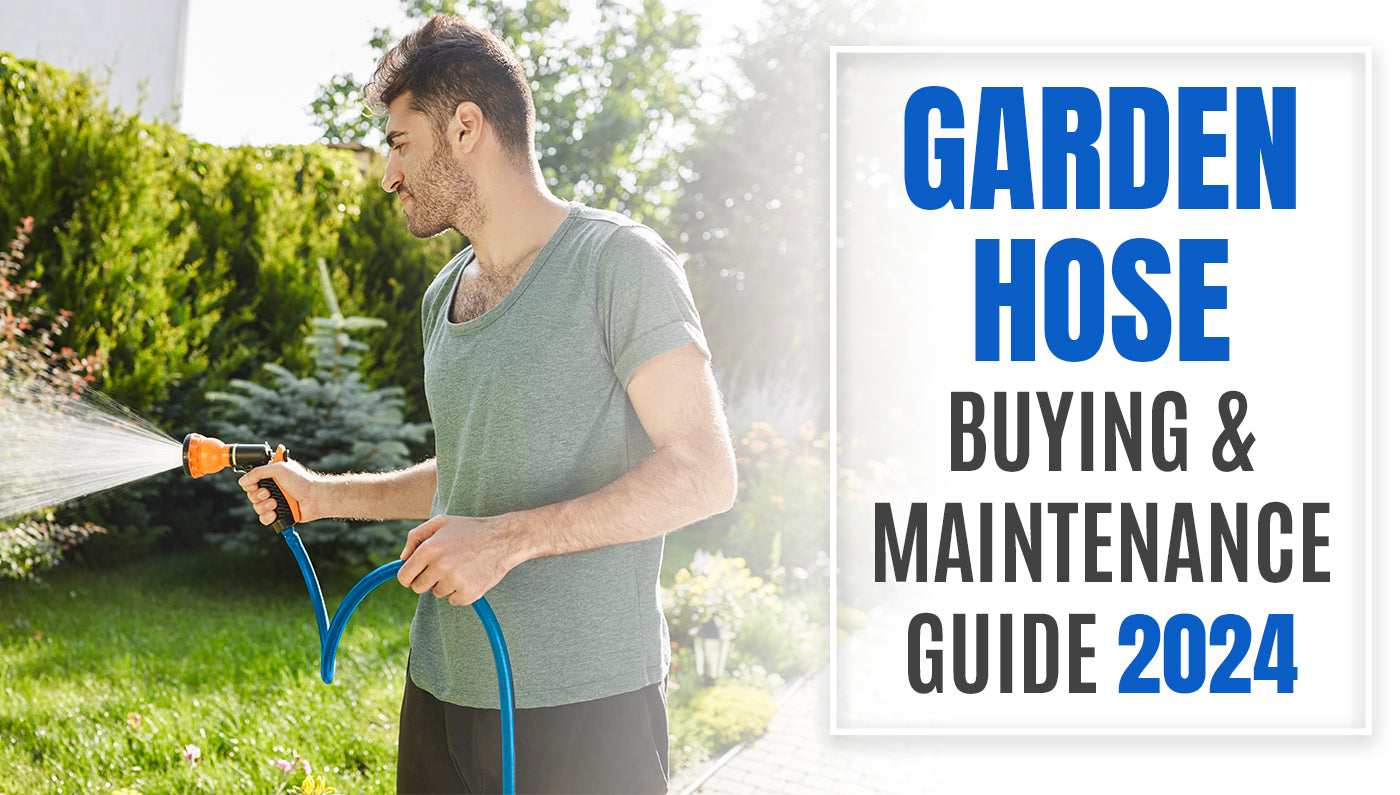A garden hose can be an essential and nifty tool to have. However, to maximize the use of a garden hose, you need to choose the right one carefully. This is because plenty of different types of garden hoses are available in the market. Thus, selecting the right garden hose is crucial to ensure efficient watering, minimize wastage, and optimize your overall gardening experience.
So, if you are keen on buying the right garden hose for yourself and learning how to maintain it, then this blog is for you. Read on as we discuss some useful garden hose buying and maintaining tips.
Types of Garden Hoses
Garden hoses come in different materials, which are designed for various needs. Some garden hoses based on their material type are discussed below.
1. Vinyl
Vinyl garden hoses are cheap and lightweight, which makes them easy to maneuver and handle. Most vinyl garden hoses will kink under pressure, while some premium ones will be kink-resistant.
2. Rubber
Rubber garden water hoses are durable and flexible, making them one of the top choices for quality garden hoses in the market. Most homeowners and gardeners prefer rubber garden hoses as they can be maneuvered easily in gardens and properties.
3. Plastic
Plastic garden hoses aren’t as common as rubber or vinyl. However, they are cheap, flexible, and can also be used for drinking water.
Moving on, let's look at some garden hose types based on their speciality type.
4. Sprinkler hoses
Sprinkler hoses have a sprinkler on one side, which is a nozzle fitted with dotted holes. They are used for gently spraying water upwards and are designed to be used on the ground.
5. Soaker hoses
Soaker hoses, as the name suggests, can be buried inside mulch or soil and can provide water to your garden directly. They help prevent water wastage and keep your soil hydrated.
6. Commercial hoses
These hoses are designed to be used with hot water and are made for heavy use. They come with features like reinforced braiding and extreme temperature-resistant properties.
Size and Diameter
The standard size of a garden hose is around 25 to 100 feet in length. However, there are different sizes available, and you should choose the one that will be long enough to reach the places in which you will use it.
The common diameter of a garden hose comes in three types – 3/8th inch, 3/4th inch, and 1/2 inch. The bigger the diameter of the hose is, the more water you can use.
Choose the right type of hose length and diameter if you are planning to use your hose with a pressure washer.
How to Increase Water Pressure from Garden Hose
Increasing water pressure from a garden hose can enhance its efficiency in watering. Thus, if you want to increase your garden hose’s water pressure, check the tips listed below.
1. Check for obstructions
Ensure that there are no kinks, twists, or blockages in the hose. Any obstruction can significantly reduce water flow and pressure.
2. Inspect the nozzle
Clean the nozzle or spray gun at the end of the hose. Sediment or debris can accumulate and restrict the water flow.
3. Use a shorter hose
If you're using an excessively long hose, it can lead to a drop in water pressure due to friction and resistance. Thus, it may help to use a shorter hose length to increase pressure.
4. Use a high-pressure hose
Try purchasing a high-pressure hose designed to deliver more forceful water streams. These hoses are constructed to handle greater water pressures than standard garden hoses.
How To Connect Two Garden Hoses
Connecting two or more garden hoses will allow you to increase your overall hose length and also reach faraway areas without having to relocate your water source.
Follow the guide below to connect hoses.
1. Select the right coupling
Ensure you have the appropriate hose coupling or connector like threaded connector, quick-connect fittings and repair couplings.

2. Prepare the hoses
Before connecting, ensure that the ends of both hoses are clean and free from debris.
3. Connect your hoses
For threaded connectors, you can attach seal tape to the ends. For quick-connect fittings, you can screw on the connector ends.
4. Test the connection
Once connected, turn on the water source to check for leaks or any weak spots in the connection.
Hose Fittings and Threads
Garden hoses typically come with standard sizes for their threads. The most common sizes for garden hose threads include:
¾ inch
This is the most common size for garden hoses in North America.
5/8 inch
Some hoses, especially those with a smaller diameter, can have a 5/8 inch thread.
You need to make sure the threads are compatible when connecting different hoses, faucets and other accessories. The standard ¾ inch will fit most hose connectors, sprinklers and nozzles.
Maintenance & Repairs Tips For Your Garden Hose
If your garden hose is leaking, repairing it can help save water, restore water pressure, and also prevent further damage to your hose.
Below is a guide for repairing leaks in your garden hose.
1. Locate the leak
Turn on the water to identify the exact location of the leak.
2. Cut out the damaged section
Once you locate your leak, measure a few inches on each side of the damaged hose. Then, use sharp scissors to cut out the damaged section.
3. Clean the ends
Once the ends are cut, use a cloth to remove debris on either end. You can also use sandpaper to smoothen out the edges.
4. Use repair couplings
Purchase a hose repair coupling that matches the diameter of your garden hose. These couplings are often made of plastic or metal and have two sides that screw onto the hose ends.
5. Use a hose repair tape
For smaller leaks or temporary fixes, hose repair tape or patches can be effective.
Flexibility and Storage
Garden hoses need to be flexible so that you can use them without any hassles. Otherwise, your hoses might kink and develop leaks when bent or maneuvered at certain angles.
Moreover, flexible hoses can be easily coiled up and stored for later use. This is where rubber hoses come into play, as they are the most flexible out of all hoses and can be maneuvered easily without you worrying about them kinking, cracking or leaking.
Special Features To Look For While Buying Your Hose
You can try choosing garden hoses that come with certain special features that are listed below.

1. Kink resistance
Garden hoses that are kink-resistant are designed to resist twisting and tangling. This allows for continuous water flow and prevents the hose from becoming damaged at kink points.
2. UV protection
Garden hoses exposed to prolonged sunlight can become brittle and crack over time due to UV radiation. UV-resistant hoses are treated or made from materials that can withstand UV exposure better than standard hoses, which increases their overall lifespan.
3. Drinking water safety
If you want to use your hose to supply drinking water, you need a safe and non-toxic hose. You can opt for hoses that are approved by certain organizations like the NSF (National Sanitation Foundation) for safe drinking water use. These hoses are typically free from harmful chemicals like lead, phthalates, and BPA.
Final thoughts
Thus, the next time you plan to buy a garden hose, make sure you read this blog thoroughly. This will help you make an informed decision and will allow you to get a perfect garden hose for yourself that will last you for years to come.
And always remember, investing in the right hose and dedicating a little time to its upkeep can truly transform your gardening experience.
Looking for the best garden hoses? Check out our collection here at https://thebluehose.com/collections/water-hose

